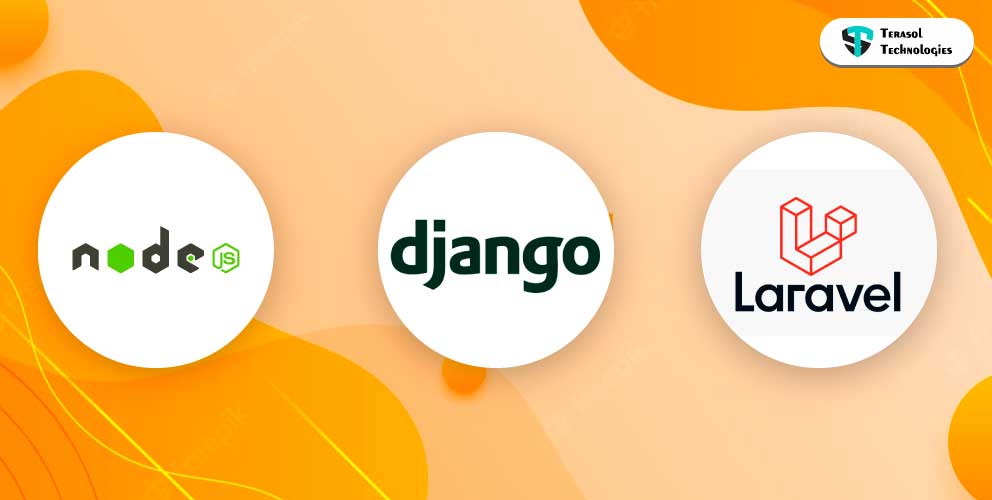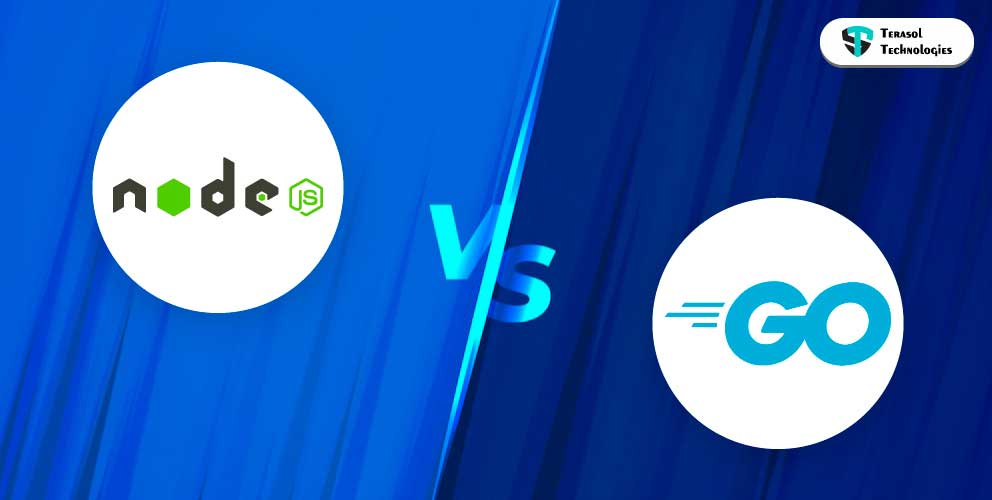Node 16.0 version: Latest Upgrades & Features in 2021
For those of you who have been waiting for the release of the framework upgrade of Node, your wait is now over! The Node 16 version is already out, and the greatest thing is that it will be available for long-term support (LTS). With this latest Node.js version available, you may get a fresh start on your next Node.js project and be future-ready.
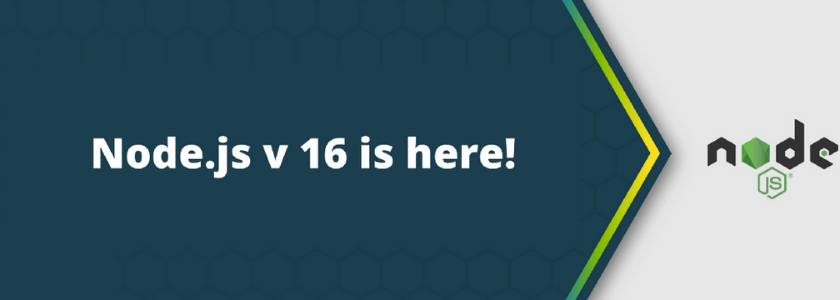
Node.js Application is becoming one of the most popular among developers since it provides a JavaScript runtime environment for app development. Every year, a new version of the Node.js server-side JavaScript runtime engine is released.
Node.js first appeared on the market in the year 2009. The new current release Node.js 16 version, which was made available in April 2021. It is now at its current release for the first six months and will be upgraded to the Long Term Support (LTS) version in October 2021, with maintenance extending through 2024. This is because they need a diverse ecosystem to test it and provide feedback to the community. This will allow them to resolve any concerns ahead of time. This will help to ensure that the release, the ecosystem, and its clients are all ready when it gets promoted in October.
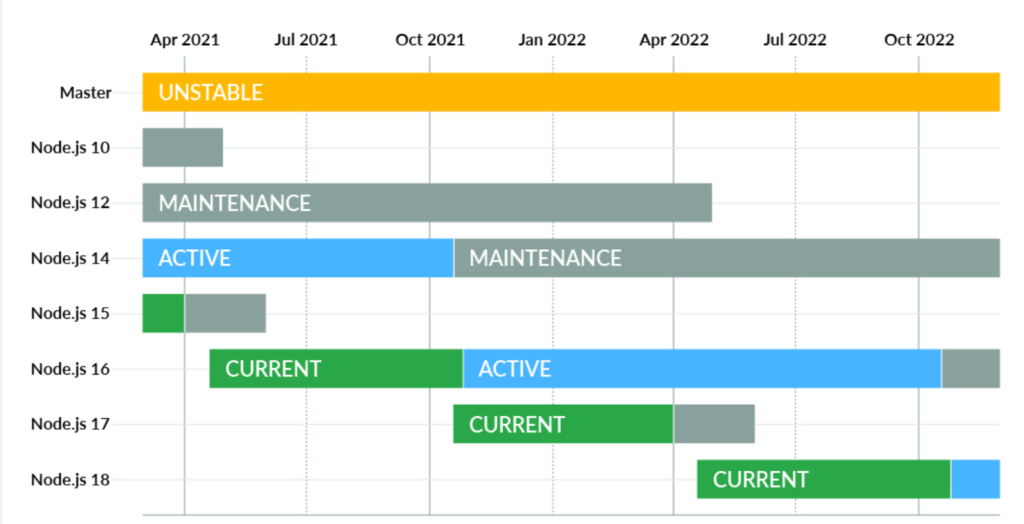
Whether you've already updated your Node version or are planning to do so soon, let's have a look at what this new version has to offer!
In this blog, we will tell you the new Node upgrades and features in Node 16.0.0. version, that is:
- V8 JavaScript Engine Version 9
- Platform support Updated
- Async Local Storage APIs
- New Promises APIs
- Web Crypto API
- N-API Version 8
- Apple Silicon
Node 16: Node Upgrades and Features
V8 JavaScript Engine Version 9
As you may be aware, the V8 JavaScript engine is a runtime environment for executing JavaScript code. In general, developers do not need to worry about their code operating on Windows, Linux, or macOS because the V8 JavaScript engine allows JavaScript to operate on many platforms.
However, because V8 is written in C++ and the Node community is required to maintain and enhance V8 for the various operating system and hardware combinations.
The javascript engine V8 is updated to 9.0. For those who are unaware, Node 8.6 has already been published. Here is what the version 16 node upgrades help the developers with:
- ECMAScript RegExp Match Indices
- Performance Improvements
- Stable Timers Promises API
Platform Support Updated
This latest version like most recent ones upgrades the least supported tiers of the tools and platforms necessary to develop Node.js. For example, here are some instances of minimum support updates or changes:
- GCC version for Linux,
- AIX systems to 8.3, and,
- Xcode version to 11.
The work done to support the new Apple M1 structure is one of the most intriguing aspects of Node 16. The Node team is active to build a working group, aiding with maintaining the framework rushing to support the Power PC and s390 models while also assisting with development across multiple platforms. This node upgrade has aided every Nodejs development business by making Node apps easier to create.
Async Local Storage APIs
When compared to the primary Async Hooks, the concept of AsyncLocalStorage API is much simpler, trustworthy, and quick to become solid.
While we didn't quite get the AsyncLocalStorage API stable in time for the Node 16 release but the node contributors are working hard on this to make it happen before Node.js 16 becomes LTS in October.
It is a significant step to provide an inherent set of APIs used by various packages, such as OpenTelemetry, to aid the tracing component of Observability in Node.js applications.
Let us now look at a few examples of programs that use AsyncLocalStorage to understand what benefits it provides.
Input:
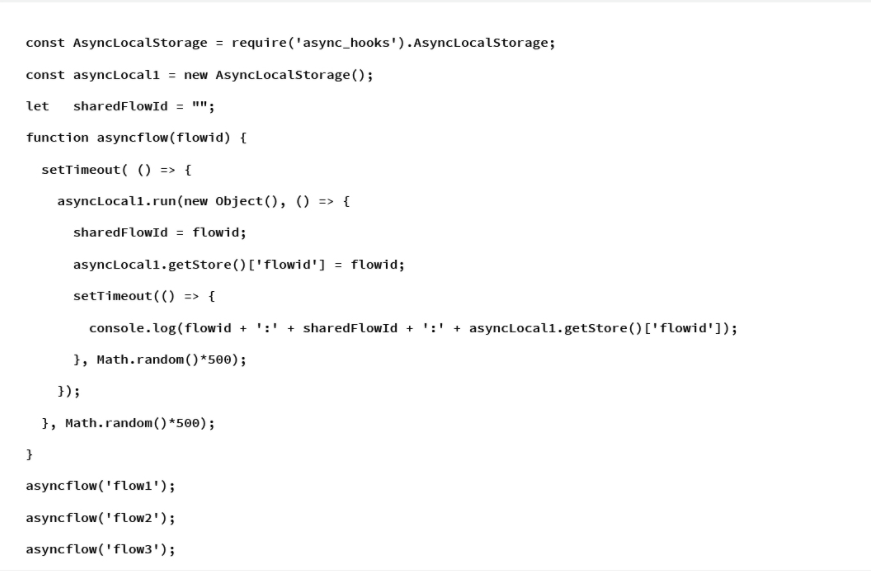
Output:

A question that might arise is: " Why does one need AsyncLocalStorage if one can just use a variable capture through closures?".
The answer is quite easy. While it is feasible to calculate the flow value in this example, it is not viable to do this in more realistic circumstances. The same is true for transmitting the flow value via each Async call in the flow. It is not only complex and difficult, but it might have a significant influence on numerous heaps of code.
On the other hand, even though asyncLocal1 is a shared global, asyncLocal1.getStore() returns an object that is unique to each asynchronous flow. This is the magic provided by the AsyncLocalStorage API, which allows us to obtain the correct flow-id regardless of the number of concurrent Async flows running the same code.
New Promises APIs in Node 16
Within the project, a purposeful effort is being taken to attach promise-based APIs. The inclusion of Promise-based time APIs is one such fascinating feature of the Node 16 version. Stable timers were offered as an experimental feature in Node 15's prior version. On a positive note, you may now use the following Node 16 Feature.

It's great to see this continuous way of adding promise-based APIs. Essentially, Node 16 promotes the promises API for timers. This API provides JavaScript timer methods that originally return native promises. In general, functions like setTimeout() take a callback.
However, when combined with the most recent asynchronous programming, this can become unmanageable.
Furthermore, when promises are coupled with await/async, the code becomes even more understandable. In a synchronous language, waiting for a timer is the same as making a standard sleep call.
Web Crypto API
Before Node 16 version, extra libraries were required to be introduced to execute cryptographic operations, which raised concerns about their efficacy. Cryptographic duties include encryption and representation of various types, hashing, signature creation, multidimensional authentication, and many more.
In this version, allowing Web Crypto support with Node.js improves compatibility between JavaScript in web browsers and servers. Using Node, you may extend various parts of the W3C standard. Furthermore, it comes with its own set of variants on specific things. Although, this is under experimental assistance and support.
N-API Version 8
Node.js 16 continues to make it easier to create, generate, and support native modules known as add-ons. NODE-API v8 support is included in Node 16. Some are:
Object sealing, such as napi_object_seal
Objects that are frozen, such as napi_object_freeze
Objects that are type-tagged, such as napi_type_tag_object/napi_check_object_type_tag
The use cases have brought to the team the additions from real-world use in each release of NODE-API.
Apple Silicon
The release of builds for Apple Silicon CPUs is another new feature of Node 16. This should boost performance on new Mac hardware. Instead of using the Rosetta copying layer, Node.js will operate natively on the Apple M1. Clients using the tarball distribution technique should select either the darwin-x64 (Intel) or the darwin-arm64 (Apple Silicon) packages.
JavaScript Engine Updates
Node.js 16 includes the V8 JavaScript engine in version 9.0. In Node.js 15, this replaces V8 8.6. V8 has received numerous new features as well as considerable performance improvements in the months between the two versions.
Faster calls to functions with mismatched parameter list lengths are one example of such an improvement. When a parameter is optional, the first variant is typically used. When a function is refactored to remove a parameter, a later variation might arise. Before V8 8.7, this type of code resulted in a performance penalty. This JavaScript feature allows you to access the parent of an inheritance-based class.
Deprecations
As a significant release, Node 16 includes several deprecations and deletions. More information may be found in the entire changelog. The intention to eliminate access to numerous core modules through process.binding is a major deprecation ().
This method allows you to access the underlying C++ objects that are hidden behind the Javascript module implementation. Module bindings such as crypto, v8, async wrap, and URL have been deprecated and may be removed in the future.
Other changes include the deprecation of the recursive option to the fs.rmdir() directory removal function. Instead, the new code should utilize the fs.rm(path, recursive: true) method. This modification was done to better align Node.js to the rmdir Unix command.
As Node.js 16 is now available, there are a few newly released capabilities in Node v15 that will also be accessible in Node 16. These are as follows:
- V3 of the Stable Source Maps
- For compatibility with the eternal web platform APIs, use the string encoding methods atob (buffer.atob(data)) and btoa (buffer.btoa(data)).
- Stable AbortController
- Npm 7 support
Conclusion:
The Node 16 Version is a significant new release that brings numerous new features to the LTS channel while also including the most current V8 JavaScript highlights. This is near to the release of npm v7 and Apple Silicon-native builds.
You may obtain the updated release via the current channel by following the installation instructions on the Node.js website. On October 26th, 2021, Node version 14 will be replaced by Node 16 as the LTS release. Clients should expect to upgrade to v16 as soon as possible.
We cannot stay with the old forever; we must evolve since it is the only constant. Upgrade your Node version to make use of the Node.js 16 capabilities. If you want to outsource online services utilizing Nodejs, you may hire Nodejs developers. Contact us now and we will help you with the development.

